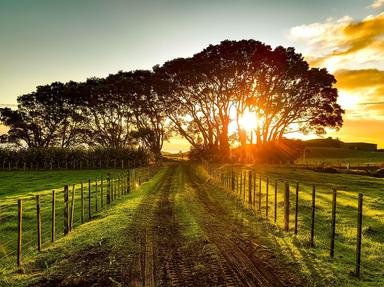Quiz Answer Key and Fun Facts
1. Wellington lies 41 degrees south of the Equator and enjoys a temperate climate. One element of the city's climate has given Wellington a nickname. What is Wellington's nickname?
2. Wellington began as a penal colony in the same way Sydney, Australia, did.
3. This photo is of Wellington's 'Beehive', close to the centre of the city. What is the purpose of the Beehive?
4. This photo shows The Museum of New Zealand Te Papa Tongarewa found in Wellington. Proudly exhibiting New Zealand's Maori and modern cultural history, the museum is often simply called 'Te Papa'. What welcoming theme has the museum adopted as an alternate name?
5. New Zealand is a sporting nation and the exploits of the All Blacks are known to many. The stadium in the photo is the Wellington Regional Stadium in which many sporting and cultural events take place. What is the stadium's nickname which arose from its shape and colour?
6. New Zealand's burgeoning film industry had a massive boost from a series of films directed by a Wellingtonian. Who was that director, born in 1961 in Wellington?
7. A maritime disaster in Wellington Harbour saw the loss of 53 lives. Which inter-island ferry foundered on a reef during a wild storm in 1968?
8. After the last question, it's time to look at Wellington harbour on a more pleasant day. Here's a picture of Oriental Bay, a favoured haunt of relaxed Wellingtonians on a day off. How was Oriental Bay named?
9. Lambton Quay, the street in the photo, is over 200 metres from the harbour foreshore. Why does it have 'quay' in its name when it's nowhere near water?
10. Now that you're in Wellington, you've decided you must visit the Weta Cave. What sort of person would be most likely to visit this tourist attraction?
Source: Author
Tizzabelle
This quiz was reviewed by FunTrivia editor
LeoDaVinci before going online.
Any errors found in FunTrivia content are routinely corrected through our feedback system.

